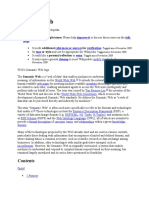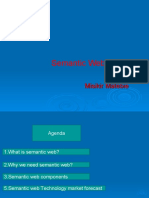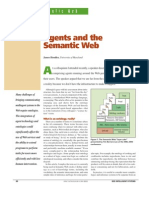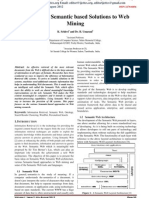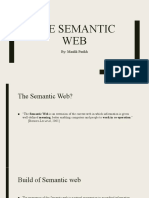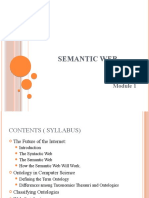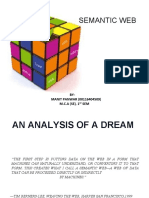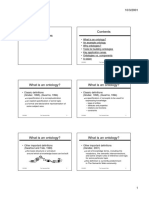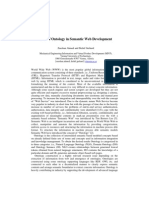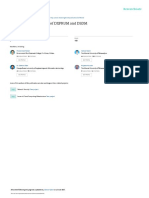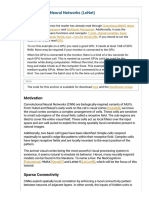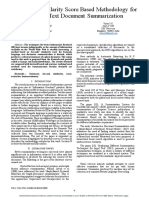0% found this document useful (0 votes)
18 views25 pagesSemantic Web - Module1
The document provides an overview of the Semantic Web, which aims to create a machine-readable web of interconnected data for better integration and knowledge sharing. It contrasts the Semantic Web with the current Syntactic Web, highlighting limitations of existing search engines and the need for semantic understanding in web content. The document also discusses ontologies, metadata, and the layered approach to developing the Semantic Web, emphasizing its decentralized nature and potential applications in various fields.
Uploaded by
ayraf raihanCopyright
© © All Rights Reserved
We take content rights seriously. If you suspect this is your content, claim it here.
Available Formats
Download as PDF, TXT or read online on Scribd
0% found this document useful (0 votes)
18 views25 pagesSemantic Web - Module1
The document provides an overview of the Semantic Web, which aims to create a machine-readable web of interconnected data for better integration and knowledge sharing. It contrasts the Semantic Web with the current Syntactic Web, highlighting limitations of existing search engines and the need for semantic understanding in web content. The document also discusses ontologies, metadata, and the layered approach to developing the Semantic Web, emphasizing its decentralized nature and potential applications in various fields.
Uploaded by
ayraf raihanCopyright
© © All Rights Reserved
We take content rights seriously. If you suspect this is your content, claim it here.
Available Formats
Download as PDF, TXT or read online on Scribd
/ 25











